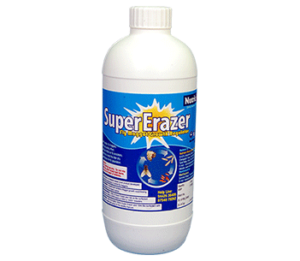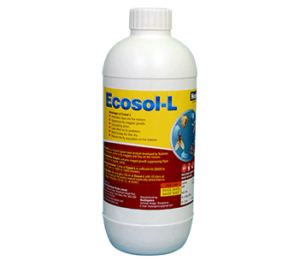Comprehensive Fly Control Programme
One of the largest management problems facing the poultry producer is filth fly control. The shift from many small farm flocks to fewer large poultry operations has greatly increased fly problems by creating concentrated breeding areas and large volumes of manure that cannot be removed frequently. As urbanization and rural non-farm residence increase, poultry producers face increasing pressures to reduce fly population. Manure-breeding flies may cause a public health nuisance, resulting in poor community relations and threats of litigation. A dedicated effort is necessary to achieve an acceptable level of fly control.
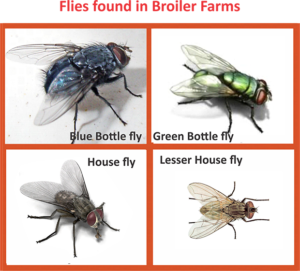
Several kinds of flies are found in and around caged layer/breeder houses in India. The house fly and the little house fly are the most common flies found in poultry farms, sometimes blow flies also live along with them.
Comprehensive Fly Control Programme is a strategical combination of farm-management techniques and precise use of Nutricon’s Fly Control Products.
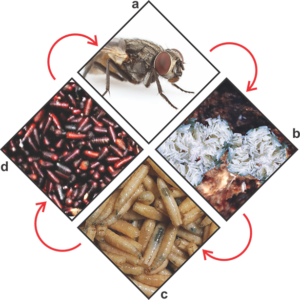
Fly Biology
a) Four days after emerging from pupal stage, adult females mate and begin to lay eggs, in five to six lots of 100 to 150 eggs. Each female fly can layup to 700 eggs in its lifetime.
b) Female flies congregate and deposit their eggs on warm, moist organic matter which is suitable for the development of larvae. Animal and poultry manure is the best breeding medium for flies. The eggs are white in colour and are about 1.2 mm in length.
c) Eggs hatch into pale-whitish, cylindrical and anteriorly tapering larvae (maggot) in 12 to 24 hours. Maggots pass through three growth stages to complete their development in 4 to 7 days.
d) Mature larvae form a dark reddish-brown puparium from the larval skin and then pupate. The adult fly emerges after a pupation stage of 3 to 4 days.
Manure Management
- Fly control programme is basically a manure management strategy.
- Dry manure (50 % moisture or less) reduces the suitability for fly oviposition and larval development.
- Dry manure also provides a desirable habitat for beneficial predators and parasitoids.
- Removal of manure: Manure must be removed once in every 5 days. (or) Allow the manure to accumulate for longer periods and then remove it only in cooler months when fly activities are less.
- Accumulation of manure for longer period will also help to conserve beneficial predators and parasitoids.
- Causes for loose droppings should be identified and removed immediately.
Water Management
- Moisture level of the manure is directly affected by leaky water lines.
- Leakage from nipples and foggers are commonly seen in most of the poultry farms, so it should be attended and fixed immediately.
- Daily inspection of all the water lines must be done. Leaky water lines should be repaired immediately.
- By providing clean and wholesome water to birds, dysentery and other gut related problems are prevented.
Sanitary Measures
- Dead birds and rodents must be removed daily and disposed properly.
- Spilling of feed and broken eggs on the manure should be avoided because they attract adult flies and pest beetles.
- Mowing grass and weeds adjacent to the poultry house eliminates resting areas for adult flies and also allows full airflow.
- Provide adequate cross-ventilation to reduce manure moisture which also removes toxic gases such as ammonia from the manure.
- Avoid unnecessary and unprofitable pesticide applications on the manure.
Fly population monitoring and documentation
- Every farm must have a systematic, written fly control plan.
- Suitable fly-breeding conditions are present throughout the year in high-rise poultry houses, therefore fly control practice should be included as an integral part of the farm management program.
- Monitoring fly population is a very important measure for taking fly control decisions. Fly control decisions based on visual observations should be avoided.
- Various methods such as Moving tape count, Sticky fly ribbons, Fly spot counts,
- Baited jug traps etc. can be used to monitor the fly population and it should be documented properly.
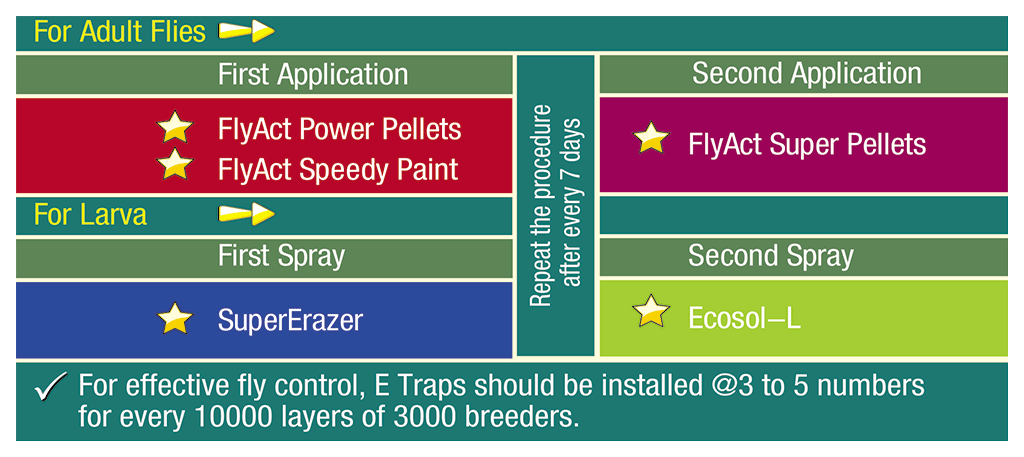
Adult Fly Control Products
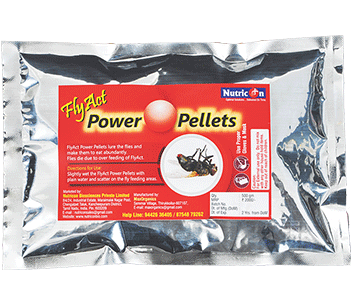
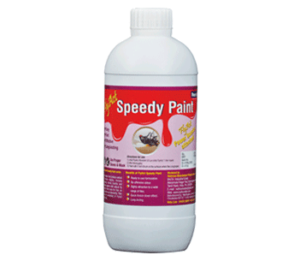
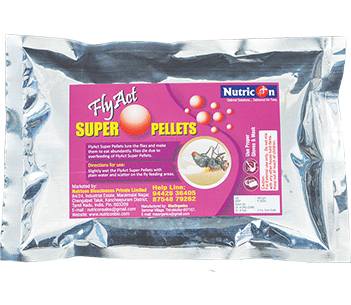
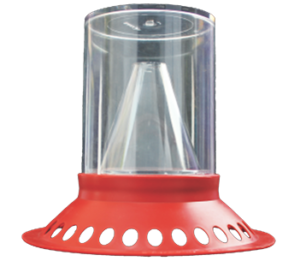
Larva Control Products
